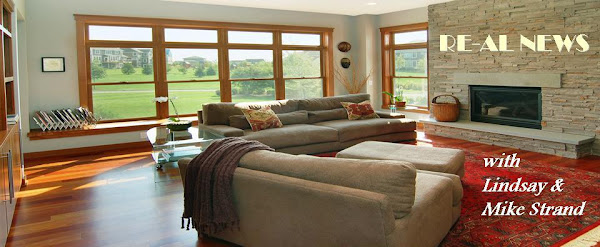Turning the key in a lock that no landlord can access, reading while resting in a hammock in your own backyard and painting your dining room bright red - what could be more exciting than making the leap from renter to first-time homeowner?
Getting swept-up in all the excitement is a wonderful feeling, but some first-time homeowners lose their heads and make mistakes that can jeopardize everything they've worked so hard to earn. Don't be one of those people; take a few moments to ponder these practical concerns that will help ensure that your first home becomes the place of luxury and financial freedom you've anticipated.
1. Don't Overspend on Furniture and Remodeling
You've just handed over a large portion of your life savings for a down payment, closing costs, and moving expenses. Money is tight for most first-time homeowners - not only are their savings depleted, their monthly expenses are often higher as well, thanks to the new expenses that come with home ownership, such as water and trash bills, and extra insurance. Everyone wants to personalize a new home and upgrade what may have been temporary apartment furniture for something nicer, but don't go on a massive spending spree to improve everything all at once. Just as important as getting your first home is staying in it, and as nice as solid maple kitchen cabinets might be, they aren't worth jeopardizing your new status as a homeowner. Give yourself time to adjust to the expenses of home ownership and rebuild your savings - the cabinets will still be waiting for you when you can more comfortably afford them.
2. Don't Ignore Important Maintenance Items
One of the new expenses that accompany home ownership is making repairs. There is no landlord to call if your roof is leaking or your toilet is clogged (on the plus side, there is also no rent increase notice taped to your door on a random Friday afternoon when you were looking forward to a nice weekend). While you should exercise restraint in purchasing the non-essentials, you shouldn't neglect any problem that puts you in danger or could get worse over time, turning a relatively small problem into a much larger and costlier one.
3. Hire Qualified Contractors
Don't try to save money by making improvements and repairs yourself that you aren't qualified to make. This may seem to contradict the first point slightly, but it really doesn't. Your home is both the place where you live and an investment, and it deserves the same level of care and attention you would give to anything else you value highly. There's nothing wrong with painting the walls yourself, but if there's no wiring for an electric opener in your garage, don't cut a hole in the wall and start playing with copper. Hiring professionals to do work you don't know how to do is the best way to keep your home in top condition and avoid injuring - or even killing - yourself.
Your Monthly Maintenance Minute
Don’t let winter slip away without using the cold weather to help you detect where your home is leaking heat, giving you a chance to seal it up tight and develop a wish list for energy-saving improvements. Find and seal energy leaks. Grab a pad and pencil to note any spots that you can’t address right away. Arm yourself with a tube of caulk to fill small cracks and a spray can of insulating foam sealer for larger gaps. Tour your home feeling for cold air entering through cracks in chimneys and window and door frames, and cracks around appliance vents, electrical and plumbing fixtures and furnace ducts. Remedies might include adding weather stripping to a door frame or applying fresh caulk to window frames.
If you’ve sealed the obvious leaks and your home is still inefficient, you’ll get more detailed information from a professional energy audit. The auditor can recommend energy-saving improvements and point out those that will most improve efficiency. Check a contractor’s references thoroughly and check for complaints at the Better Business Bureau. The Energy Department advises finding a contractor who uses a calibrated blower door and who does thermographic inspections. Expect to pay roughly $300 to $500. In some cities, utility companies or government agencies do the work or help with the fees.






No comments:
Post a Comment